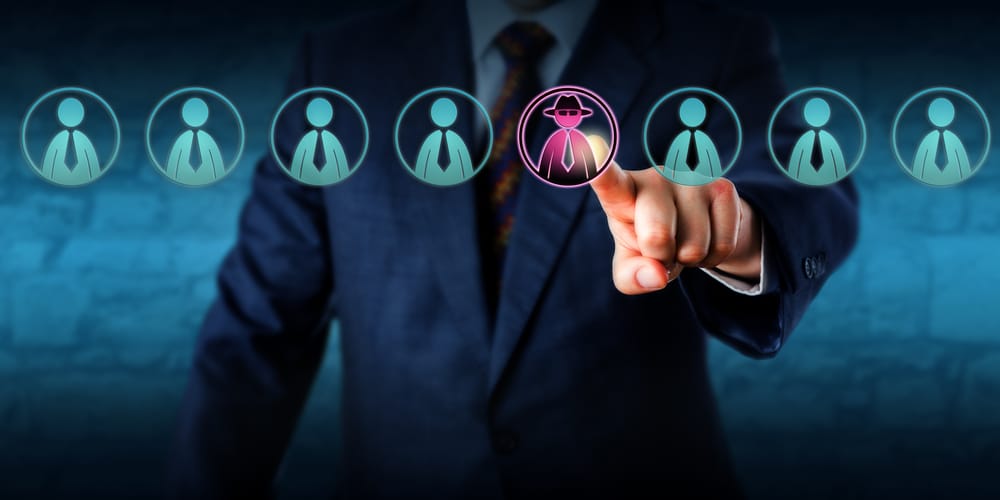
Move to the cloud opens opportunities for cybercriminals
The rapid shift of applications and infrastructure to the cloud creates gaps in security according to a new threat report from security platform Lacework.
This increases the opportunities for cybercriminals to steal data, take advantage of an organization's assets, and to gain illicit network access.

New platform offers secure cloud data integration
As enterprises continue to migrate data to the cloud they need to ensure that sensitive information is properly protected.
Automated data integration specialist Fivetran is launching a platform that offers a set of key security-related features, allowing companies to create a more secure modern data stack that meets internal and regulatory requirements.

Microsoft Azure found to have the 'worst cloud vulnerability you can imagine' -- ChaosDB
Security researchers have discovered a serious security vulnerability in Microsoft Azure that could given an attacker unfettered access to any and all of the databases stored on its Cosmos DB service.
Researchers from security firm Wiz found that it is not only possible but trivial to obtain the primary keys to databases. The vulnerability, dubbed ChoasDB, may have existed since the introduction of the Jupyter Notebook back in 2019, and it gives attackers the ability to access, edit and delete data or entire databases. Microsoft is unable to change primary keys itself, and has emailed customers to advise them to do so; but the company has been criticized for failing to contact sufficient numbers of users.

SMEs make a rapid shift to hybrid working
According to new research 42 percent of SMEs have moved, or are planning to move, offices to facilitate hybrid working, with those downsizing reducing their office space requirements by an average of 38 percent.
The study from UK data center specialists ServerChoice shows that these office moves are causing SME business leaders to rethink their IT strategies and shift their server infrastructure away from on-premises to either co-location facilities or public/private cloud.

Cado offers enterprises a free cloud security investigation
The rapid shift to cloud and remote working environments has raised security concerns for businesses and also meant hackers have increasingly turned their attention to cloud-native systems.
In response to this, digital forensics platform Cado Security is offering enterprises unlimited access to its Cado Response platform, including container and memory forensics, for 14-days, allowing them to carry out a free investigation.

IT leaders struggle to support unstructured data in the cloud
The majority of organizations are managing more than 1PB of data and spending more than 30 percent of their IT budgets on data storage and protection, according to a new report into unstructured data from data management company Komprise.
Based on responses from 300 IT storage decision makers at companies in the US and UK, it finds 65.5 percent of organizations spend more than 30 percent of their IT budgets on data storage and management.

Businesses boost SecOps staffing to guard against threats
A report out today shows that 85 percent of enterprises have increased their budget investment in security operations during the pandemic, while 72 percent have increased their staffing and 79 percent have increased their adoption of advanced security technologies.
The study from the CyberRes arm of Micro Focus also reveals that security operations centers (SOCs) have increased their adoption of the cloud, with 95 percent now deploying their solutions in hybrid-cloud environments.

Why cloud adoption requires an organization-wide culture change
In the space of a year, society has transformed beyond recognition because of COVID-19 and cloud-first for most organizations is now an imperative. To this point, by the end of 2021, 67 percent of all enterprise infrastructure will be cloud-based. But what does this mean for organizational culture, will it change -- and should it change? After all, now cloud adoption is greater than just the IT department. Whether it be a heavier reliance on the accounting team, closer collaboration with the business teams, or better information sharing with the internal IT team, cloud changes the dynamics of team interactions.
Today, an organization's existing culture can strongly predict the potential for cloud success; likewise cloud adoption does have the potential to also alter the company’s culture. It can dramatically change the day-to-day work of individual IT team members, but with the willingness to adjust employee skillsets, a wide range of opportunities can become available as a result of cloud.

Why big data warehousing is the next frontier for boosting CX
It’s been decades since the term "the customer is always right" placed customer experience (CX) at the heart of every transaction, but delivering excellence in CX hasn’t become much simpler with the passage of time.
Customers effectively expect businesses to read their minds, and they don’t have much patience for those that fail. A recent PWC survey concluded that one-third of consumers would abandon a brand they love after just one negative experience, showing just how high the bar is set for CX.

ExtraHop provides deep threat insights for hybrid cloud
The expansion of cloud use and remote working have made protecting business systems much more complicated, with simple perimeter controls no longer enough.
ExtraHop is launching updates to its Reveal(x) 360 cyber defense platform that provide deep forensic insight into hybrid cloud networks to allow for advanced threat response.

Why unintentional insider data leaks are still a problem for businesses [Q&A]
Whilst threats to data are often seen as being down to external actors, it's often the case that leaks, both intentional and otherwise, can come from insiders.
Unintentional or accidental leaks remain a major problem, and one that’s been made worse thanks to more home working. We spoke to Rajan Koo, SVP, engineering and cyber intelligence at DTEX Systems to learn more about this type of threat and how businesses can address it.

Protect cloud-native data with cloud-native backup and recovery software
Cloud-native applications are rapidly being deployed in full production. To manage cloud-native data, organizations are turning to Kubernetes-friendly storage platforms.
However, with these apps supporting real-world use cases, organizations need to plan beyond general data storage by deploying cloud-native backup and recovery software to protect these key applications and their data.

How to finally meet your cost objectives in the cloud
Migrating to the cloud offers many benefits for an organization, including increased efficiency, security and stability for many technology functions. But once an organization has made the move to the cloud, it’s critical to keep a close eye on ongoing costs. According to a recent Pulse/InterVision study, 92 percent of technology leaders and executives say their organizations expect technology teams to operate with a cloud-first approach, but 45 percent were either unsure about or not meeting their cost objectives in the cloud.
Skepticism towards the cloud will only continue to increase if costs cannot be controlled. To avoid this unfortunate trend, businesses should have certain tools in their arsenals like AWS and a trusted strategic service provider.

SMB developers trust big cloud providers -- but not completely
A new survey for cloud computing company Linode, carried out by ClearPath Strategies, looks at how much developers trust their third-party cloud providers.
Based on responses from 800 developers at small and mid-sized businesses, it finds that while developers generally say they trust their provider of choice in general, deeper examination uncovers some issues when it comes to major cloud providers.

Get 'Cloud Computing For Dummies, 2nd Edition' (worth $21.00) FREE for a limited time
Cloud computing is no longer just a clever new toy in the world of IT infrastructure. Despite the nebulous name, it’s become a real and important part of our information architecture -- and tech professionals who ignore it or try to skim their way through risk falling behind rapidly. The new edition of Cloud Computing For Dummies gets you up to speed fast, clarifying your Cloud options, showing you where can save you time and money, giving you ways to frame your decisions, and helping you avoid weeks of research.
In a friendly, easy-to-follow style, Cloud Computing For Dummies, 2nd Edition demystifies the Cloud’s virtual landscape, breaking up a complex and multi-layered topic into simple explanations that will make the various benefits clear and ultimately guide you toward making the most appropriate choices for your organization.
